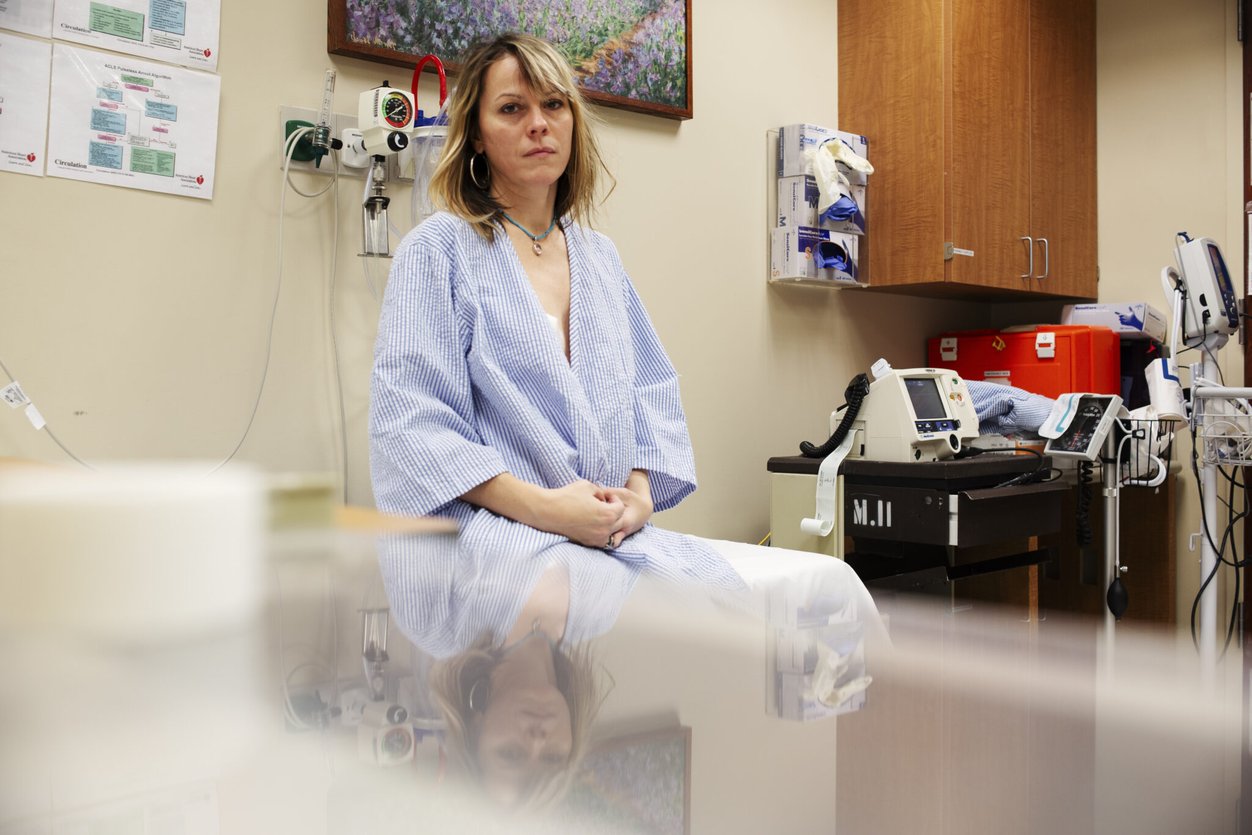first opinion
This husband and wife photographed each other during her cancer journey

Anna Rathkopf
At 37, Anna Rathkopf was diagnosed with breast cancer. She and her husband Jordan, both photographers, immediately began to document her treatment and the way cancer affected their entire family. Only years later, as Anna's doctor told her that she was being transferred to survivorship care, did they begin to sort through all the photos they'd each taken along the way.
"I realized I was afraid to enter 'survivorship,'" Anna writes in a First Opinion essay she and Jordan co-authored today about the photo project. "I felt the urgent need to process what I had gone through, something tangible to help me express and understand the emotions I had buried."
Read the essay, where you can also see some of the striking photographs. And on today's episode of the First Opinion Podcast, you can hear Anna and Jordan talk about the project, and how seeing each other's photos helped them finally understand what the experience was like for the other person. (For example: Whereas Jordan always focused on documenting moments of love and resilience in his photos, he later saw how Anna's photos, like the above self-portrait, revealed her vulnerability and grief.)
medicine
How often are kids getting pulmonary embolism?
Blood clots that block arteries in the lungs are generally understood to be rare among children. But a new study abstract, presented yesterday at the American Thoracic Society 2025 International Conference, suggests it could happen more often than the earlier evidence has indicated. Previous studies have identified varying but low rates among youth — anywhere from 8.6 to 57 out of every 100,000 hospitalized children, but just 0.14 to 0.9 of every 100,000 in the general population, per one review.
The new study found that up to 6.3% of children who go to the emergency room with symptoms may end up diagnosed with acute pulmonary embolism (that's a whopping 6,300 per 100,000, if you want to compare rates). Out of more than 3,600 children ages 4 to 17 presenting symptoms of the condition in 21 U.S. emergency rooms, 3% were found to have pulmonary embolism alone; 1.8% had deep vein thrombosis; 1.3% had both.
It's the first prospective study to focus on the condition among young people, meaning patients were followed over time. But keep in mind: This study followed children who already had symptoms of the condition, so the rates can't be compared directly with those among all hospitalized children or the general population. The full paper has yet to be published, and more research is necessary.
cancer
Biden's diagnosis is part of worrisome trend
Cases of advanced prostate cancer have been rising sharply. That might be because PSA testing, which is used to screen for prostate cancer, became deeply controversial after a large 2009 study suggested it provided no mortality benefit. Experts said that led to the United States Preventive Services Task Force downgrading its recommendation for the test in 2012 and, potentially, reduced prostate screening for years. That was later revised to encourage men from the ages of 55 to 69 to have a conversation with their doctor about the PSA test, and experts now generally agree that the PSA test is beneficial and that the benefits outweigh the harms of screening.
Even so, scientists have seen a roughly 4 to 6% increase each year in advanced prostate cancer diagnoses. That continued through 2018, according to data from a JAMA Network Open paper and the SEER database, when the task force revised its recommendation. Read more from STAT's Angus Chen.


No comments